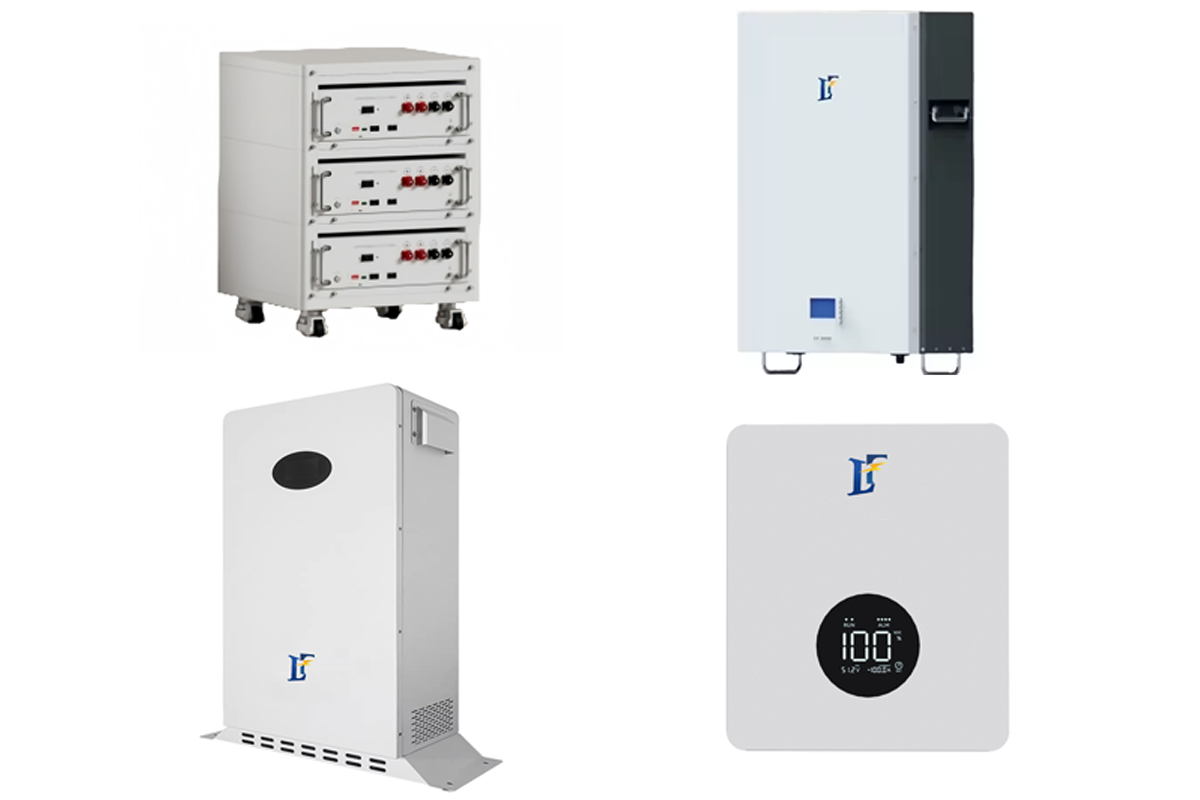Home Energy Storage Battery Capacity guide: How to Choose it ?
With the continuous development of home energy management, home energy storage batteries have become an essential device for many households. They provide backup power during power outages, optimize energy usage, and reduce electricity costs. So, the question arises: what battery capacity does an average household need to meet daily energy consumption?
1. Calculate the Actual Need for an Energy Storage Battery
Household Power Consumption:
- Lighting: Each of the 10 LED bulbs (10W each) is used for 5 hours per day, resulting in a total consumption of 500Wh/day.
- Refrigerator: The refrigerator consumes 100W and runs for about 8 hours daily, totaling 800Wh/day.
- Television: The TV uses 100W and is on for 3 hours a day, adding up to 300Wh/day.
- Washing Machine: With a power draw of 500W, the washing machine runs for about 0.4 hours per day on average, consuming 200Wh/day.
- Air Conditioning/Heating: The air conditioner/heater consumes 1000W and operates for 4 hours daily, using 4000Wh/day.
- Kitchen Appliances: These appliances (like the rice cooker and microwave) are used for around 1 hour a day, totaling 1000Wh/day.
- Other Devices: Phones, laptops, and similar gadgets contribute an average of 200Wh/day.
Total Daily Energy Consumption: Adding everything together, the household consumes approximately 7000Wh (7kWh) per day.
2. Calculate the Effective Capacity of the Energy Storage Battery
The typical battery depth of discharge (DoD) is around 90%, so:
7kWh (total daily energy consumption) / 90% = 8.75kWh (required total capacity)
Based on this, we can conclude that a standard 5kWh 48V 100Ah LiFePO₄ battery is sufficient for half a day of daily energy consumption for a household. A 10kWh 48V 200Ah LiFePO₄ battery can cover a full day’s use. For storing energy for extreme weather conditions, a 15kWh or larger capacity battery would be needed.
3. Classify the battery capacity based on different usage scenarios.
Small households or emergency backup only: Small capacity (5-10kWh): Suitable for small households or as backup power for a few appliances. For example, this product:5KWH/10KWH 51.2v 100/200ah Solar Home Lifepo4 Battery
Standard household daily energy needs: Medium capacity (10-15kWh): Suitable for average households including refrigerators, lighting, and some high-energy appliances. For example, this product:10 kwh lifepo4 48v 200ah Solar Home Lifepo4 Battery
Large households or high backup power needs: Large capacity (above 15-20kWh): Suitable for large households or those with higher power demands, able to maintain normal usage for several days during a power outage.
Home energy storage batteries are an important tool for optimizing household spending and providing backup power protection, but choosing the right capacity is more important. Through your personal needs and budget, you can create a safe, efficient and environmentally friendly energy storage solution for your family.
If you have any questions, you can always contact me and provide you with a free customized solution!
Take action now, choose a suitable energy storage battery for your family, and start a new life of green energy!

